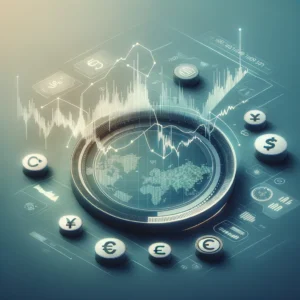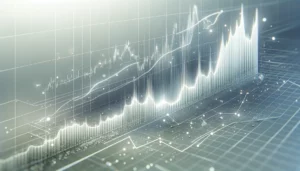Introduction
In the fast-paced world of forex trading, where markets operate 24/7, and opportunities can vanish in the blink of an eye, traders are constantly seeking ways to stay ahead. The evolution from manual to automated forex trading has been nothing short of revolutionary, offering a beacon of efficiency and precision in an ocean of unpredictability. By leveraging cutting-edge technology, traders can now execute strategies with speed and accuracy that human traders can’t match. This transformation is not just about embracing new tools but about adopting a new mindset towards trading—one that values data-driven decisions over gut feelings. For those looking to dive deeper into the realm of automation, exploring platforms like MetaTrader 4 and understanding the role of Expert Advisors can offer invaluable insights into maximizing your trading potential.
Understanding Automated Forex Trading
Automated forex trading revolutionizes the way we interact with the forex market. By leveraging advanced computer programs, including trading robots and Expert Advisors (EAs), traders can fully automate their trading strategies. This not only streamlines the trading process but also enhances precision, allowing for the management of multiple accounts and the implementation of diverse strategies simultaneously with remarkable accuracy.
One of the key benefits of automated trading is its ability to operate 24/7, capitalizing on opportunities even when traders are not actively monitoring the markets. This is particularly advantageous in the forex market, known for its rapid movements and the potential for significant gains.
For those curious about integrating these tools into their trading arsenal, resources like our Expert Advisors: Great Utility for Forex Traders offer an in-depth look at how EAs can be customized and optimized for various trading strategies. Additionally, understanding the intricacies of different automated trading platforms can significantly enhance your trading outcomes. For a comprehensive comparison, consider exploring our reviews, such as the Pionex review or the CryptoHopper review, which detail features, benefits, and how these platforms align with automated trading goals.
Moreover, embracing automated trading opens the door to exploring advanced trading strategies. Our guide on Maximizing Profits with Forex Grid Trading Strategies provides insights into one such approach, showcasing how automation can be leveraged for systematic, strategic trading that targets consistent profits over time.
Automated forex trading is not just about implementing technology; it’s about transforming your trading approach to be more efficient, accurate, and profitable. As you delve deeper into this realm, resources like The Evolution of Automated Trading offer valuable perspectives on how far this technology has come and where it’s headed, ensuring you stay at the forefront of trading innovation.

Benefits and Challenges
Automated forex trading brings a blend of advantages and hurdles, each playing a critical role in shaping a trader’s journey toward success in the forex market. By automating trading strategies, traders unlock significant benefits, including the reduction of emotional biases in decision-making and the efficient use of time. Yet, navigating the challenges is equally important for setting realistic expectations and achieving sustained profitability.
Benefits:
- Elimination of Emotional Bias: Automated trading systems execute trades based on predefined criteria, thus bypassing the emotional indecision that can plague manual trading. This leads to more disciplined and consistent trading strategies.
- Time Efficiency: By automating the trading process, traders can save considerable time, allowing them to focus on strategy refinement and research rather than constant market monitoring.
- Backtesting Capability: Automated systems enable traders to backtest their strategies using historical data, offering insights into the effectiveness of a strategy before risking real capital.
Incorporating automated trading into your strategy requires understanding the tools at your disposal. For example, The Ultimate Guide to MetaTrader 4 explores one of the most popular platforms for implementing Expert Advisors (EAs), providing a robust foundation for your automated trading endeavors.
Challenges:
- Technical Failures: Despite the efficiency of automated systems, traders must be prepared for the possibility of technical failures, such as connectivity issues or system malfunctions, which can impact trading outcomes.
- Over-Optimization: There’s a risk of over-optimizing a trading strategy to perform well in historical market conditions, which may not necessarily predict future conditions accurately.
- Market Volatility: Automated systems may not always adapt quickly to sudden market changes or unexpected news events, which can lead to significant losses.
Understanding the nuances of automated trading is crucial for navigating its challenges. For insights into effective strategy development, consider exploring Developing Your Trading Approach, which can help you build a resilient, adaptive trading system. Additionally, Risk Management in Algorithmic Trading offers strategies to mitigate financial exposure and protect against market volatility, ensuring a balanced, informed approach to automated forex trading.
Embracing the benefits while effectively managing the challenges of automated trading can significantly enhance your trading performance. With the right tools, knowledge, and strategies, traders can navigate the forex market with greater confidence and efficiency.
Choosing the Right Automated Trading Software
Selecting the optimal automated trading software is a crucial step that can significantly influence your trading outcomes. The right software not only aligns with your trading strategy but also enhances your ability to execute trades efficiently and effectively. Here’s what to consider when making your choice:
Key Features to Look For:
- User-Friendliness: The software should be accessible to traders of all skill levels, from beginners to advanced.
- Customization Options: Look for software that allows for easy customization of strategies and the flexibility to adjust parameters according to your trading style.
- Reliability and Performance: Assess the software’s track record for stability and performance during various market conditions.
- Support for Backtesting: It’s essential to choose software that offers robust backtesting tools, enabling you to test strategies against historical data before going live.
For traders considering the leap into automated trading, our Coinrule review offers insights into a platform that balances user-friendliness with powerful customizability, ideal for both novice and experienced traders.
Assessing Reliability and Performance: Evaluating the reliability and performance of trading software involves researching user feedback, performance metrics, and the developer’s reputation. Additionally, ensure the software is compatible with your preferred trading platforms and brokers.
The Importance of Backtesting: Backtesting your strategies using historical data is critical before going live. This process helps identify potential flaws and optimize strategy effectiveness. For a deep dive into the significance of this process, explore The Importance of Backtesting in Automated Trading, which emphasizes how backtesting can be a game-changer in strategy development.
Developing a Winning Automated Trading Strategy
Creating a successful automated trading strategy is foundational to achieving long-term profitability. This endeavor involves identifying market opportunities, setting up your Expert Advisors (EAs) correctly, and continuously refining your strategy to adapt to market changes.
Identifying Profitable Opportunities: Start by analyzing market trends, historical data, and potential indicators that align with your trading goals. Utilize tools and resources to gain insights and forecast potential movements accurately.
Setting Up Your EAs: Configuring your EAs requires a clear understanding of the strategy you wish to automate. This includes defining trade entry and exit points, stop-loss orders, and any other rules specific to your approach. For guidance on setting up EAs, consider our How to Install an Expert Advisor in MetaTrader 4 article, which provides a step-by-step tutorial.
Adjusting Your Strategy to Changing Market Conditions: The forex market is dynamic, necessitating periodic adjustments to your automated strategy. Stay informed about global economic indicators, news events, and market sentiment to refine your approach. Our article on Managing Risk offers strategies for adapting to market volatility and protecting your investments.
Developing a winning automated trading strategy is an iterative process. By continuously analyzing performance, backtesting adjustments, and staying informed about market conditions, traders can enhance their automated trading systems for optimal performance.

Risk Management in Automated Trading
Effective risk management is the cornerstone of sustaining profitability and capital preservation in automated trading. Implementing stringent risk management protocols ensures that traders can weather the volatility of the forex market while safeguarding their investments. Here’s how to approach risk management in automated trading:
Setting Appropriate Risk Parameters:
- Define maximum risk levels for individual trades and overall portfolio exposure. This involves determining the percentage of capital you are willing to risk on a single trade and ensuring that it aligns with your long-term trading goals.
- Utilize Risk Management in Algorithmic Trading as a guide to establishing solid risk parameters that can help mitigate potential losses.
Using Stop-Loss Orders:
- Implementing stop-loss orders is crucial in automated trading. These orders automatically close out a position at a predetermined price level, helping to prevent significant losses during unexpected market movements.
- For insights on effective utilization of stop-loss orders, refer to our article on Close Position in Trading, which outlines strategies for setting and managing stop-losses.
Diversifying Your Trading Strategies:
- Diversification is key to reducing risk in automated trading. By employing various strategies across different currency pairs and time frames, traders can spread risk and increase the chances of profitability.
- Explore the concept further with The Evolution of Trading Software, which discusses how advancements in trading software have facilitated more sophisticated diversification tactics.
The Future of Automated Forex Trading
The horizon of automated forex trading is rapidly expanding, with advancements in technology paving the way for more innovative and efficient trading methods. Here are a few trends shaping the future:
Artificial Intelligence and Machine Learning:
- The integration of AI and machine learning into automated trading systems is set to revolutionize how strategies are developed and executed. These technologies enable the creation of algorithms that can learn from market data, predict future movements, and adapt strategies in real-time.
- Machine Learning in Algorithmic Trading offers a glimpse into how these technologies are being applied to develop more sophisticated trading algorithms.
Increased Accessibility:
- As technology advances, automated trading tools are becoming more accessible to retail traders, lowering the barrier to entry and democratizing the forex market.
Regulatory Evolution:
- The regulatory landscape for automated trading is evolving to keep pace with technological advancements, ensuring a balanced environment that protects traders while fostering innovation.
Conclusion
Automated forex trading presents a compelling opportunity for traders to enhance their performance and navigate the complexities of the forex market with greater ease. From understanding the fundamentals of automated trading to implementing effective risk management strategies and staying abreast of technological advancements, traders equipped with the right knowledge and tools can achieve significant success. As the landscape of automated trading continues to evolve, staying informed and adaptable will be key to leveraging the full potential of this dynamic trading avenue.




